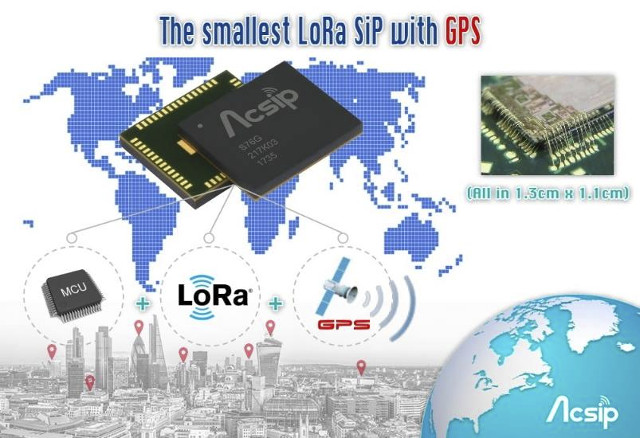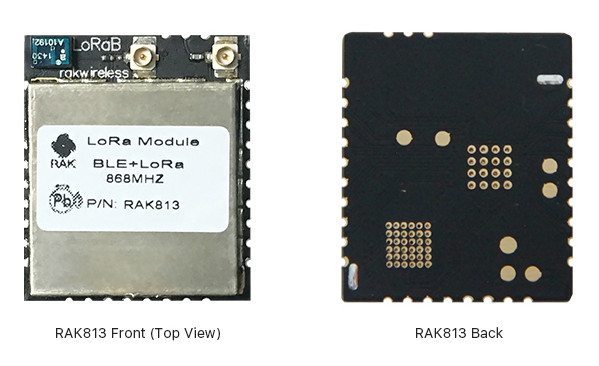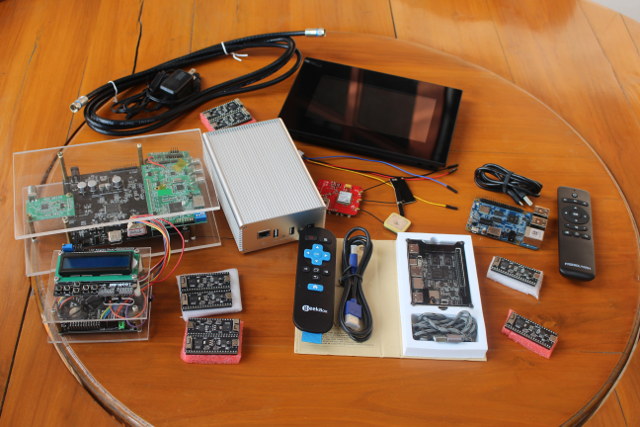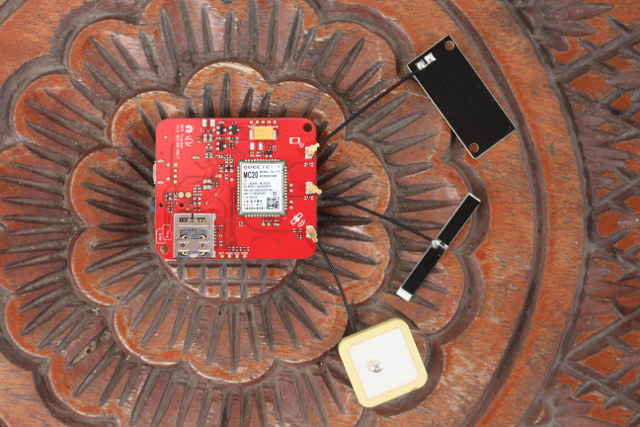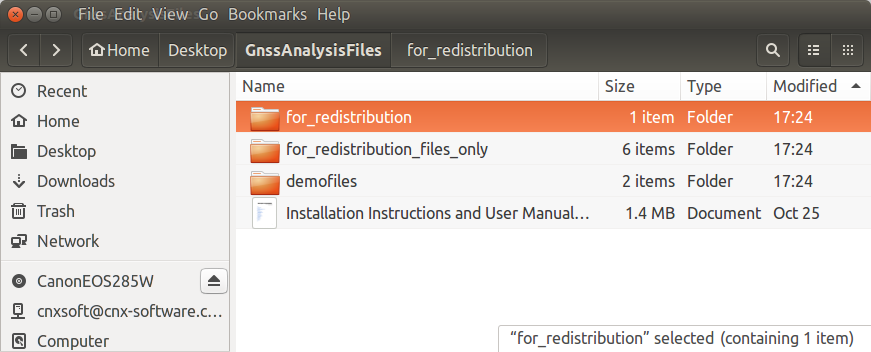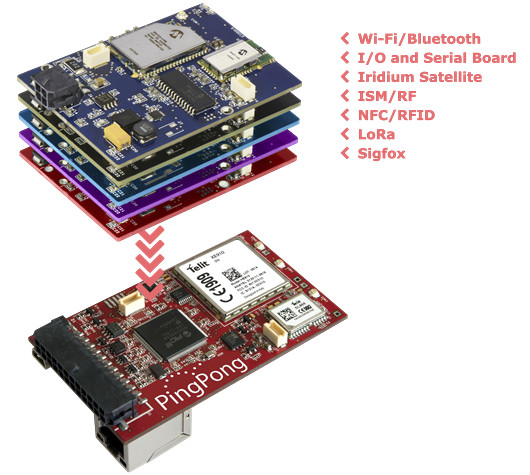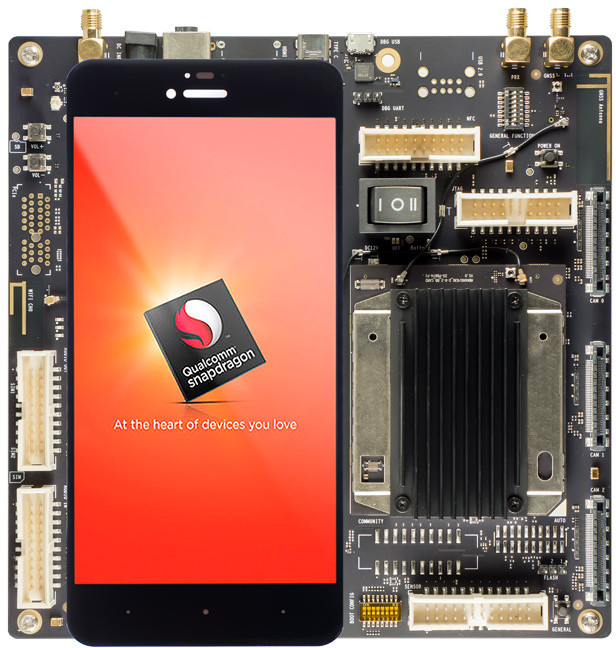LoRa has been combined with GPS in several products such as Rakwireless RAK811 LoRa tracker board, or Dragino LoRa/GPS HAT board among others, with all designed for far based on a LoRa module, plus a GPS module. LoRa GPS tracker will soon even smaller as AcSiP has developed S76G and S78G systems-in-package (SiP) that combine LoRa, GPS and an MCU into a single 1.1 x 1.3cm package. The two new modules are not listed on the company’s IoT-LoRa products page yet, but they appear to be an evolution of their S76S / S78S LoRa + MCU SiP released in 2016, so the new modules should have the following features: MCU – STMicro STM32L073x Arm Cortex M0+ MCU with up to 192 KB of Flash memory and 20 KB of RAM LoRa AcSiP S76G – Semtech SX1276 supporting global 868 MHz or 915 MHz ISM-Bands. AcSiP S78G – Semtech SX1278 supporting […]
RAK Wireless Introduces LoRa + BLE Module, LoRa GPS Tracker, and NB-IoT/eMTC Arduino Shield
We’ve previously covered several products from RAK Wireless, including RAK WisCam Arduino compatible Linux camera, RAK CREATOR Pro Ameba RTL8711AM WiFi IoT board, and WisCore modular development kit for application leveraging voice assistants such as Amazon Alexa. AFAIK, the company had not released any new products since their RAK831 LoRa gateway module launched last summer, but they just contact me with the release of three new wireless products, namely RAK813 BLE + LoRa module, RAK811 LoRa tracker board, and WisLTE NB-IoT/eMTC/eGPRS Arduino shield. RAK813 BLE + LoRa module & Development Board Main features and specifications: Connectivity LoraWAN via Semtech SX127x (LoRa) chipset Frequency Ranges 433MHz, 470MHz FCC Frequency range 902~928MHz CE Frequency range 863~870MHz MIC Frequency range 920~928MHz KCC Frequency range 920~923MHz Receiver Sensitivity: LoRa down to -146 dBm TX Power – adjustable up to +14 dBm, max PA boost up to 20dbm Range – Up to 15 km in rural […]
Qualcomm Snapdragon 845 Octa Core Kryo 385 SoC to Power Premium Smartphones, XR Headsets, Windows Laptops
Qualcomm Snapdragon 845 processor was expected since May 2017 with four custom Cortex A75 cores, four Cortex A53 cores, Adreno 630 GPU, and X20 LTE modem. with the launch planned for Q1 2018. At least, that what the leaks said. Qualcomm has now formally launched Snapdragon 845 Mobile Platform and rumors were mostly right, as the the octa-core processor comes with four Kryo 385 Gold cores (custom Cortex A75), four Kryo 385 Silver cores (custom Cortex A55) leveraging DynamIQ technology, an Adreno 630 “Visual Processing System”, and Snapdragon X20 modem supporting LTE Cat18/13. The processor is said to use more advanced artificial intelligence (AI) allowing what the company calls “extended reality (XR)” applications, and will soon be found in flagship smartphones, XR headsets, mobile PCs, and more. Qualcomm Snapdragon 845 (SDM845) specifications: Processor 4x Kryo 385 Gold performance cores @ up to 2.80 GHz (custom ARM Cortex A75 cores) 4x […]
Giveaway Week Winners – November 2017
Like every year, I’ve organized a giveaway week to send some of the items I’ve reviewed in the past year or so. There was a good mix of devices this year starting with a mini Linux NAS kit, following by some ESP32 boards, and Amlogic development boards among others. The results are in, and instead of 10 winners, I actually have 11 winners due a “timing issue”, and to make for one missing ESP32 board, a LinkIt Smart 7688 Duo board was also given away. While it started strongly for Eastern Europe, We have winners from 3 continents this year: NanoPi NEO2 NAS Kit – Hap Hapablap, Serbia Muses Beta DVB Encoder and Modulator Board – Luka, Slovenia ESP32 PICO Kit v3 boards (5 Winners): Andrius Kurtinaitis, Lithuania (2x ESP32 boards) Kebab, Turkey (2x ESP32 boards) Zoobab, Belgium (2x ESP32 boards) Sollie, Germany (2x ESP32 boards) BobR, USA (1x ESP32 […]
Giveaway Week – Wio GPS Tracker Board
It’s Friday, and the fifth day of giveaway week on CNX Software. Today, I’ll be giving away Wio Tracker, an Arduino compatible board based on Microchip / Atmel SAMD21 ARM Cortex M0 MCU with GPS, Bluetooth, 2G GSM/GPRS connectivity. My review of the board was rather negative, as I only managed to make Bluetooth 3.0 work while following the documentation as it was back in May. Since then the documentation seems to have improved, and other people have been more successful than me, and made the blink LED, and GPS samples to work. This version of the board only support 2G, so make sure it is still supported in your region/country. To enter the draw simply leave a comment below. Other rules are as follows: Only one entry per contest. I will filter out entries with the same IP and/or email address. Contests are open for 48 hours starting at […]
Testing Google’s GNSS Analysis Tool for GPS, GLONASS, Galileo, Beidou…
Google has recently released GNSS Analysis Tool to process and analyze Global Navigation Satellite System (GNSS) raw measurements from Android devices. This is mostly designed to enable manufacturers to see whether their GNSS receivers are working as expected. The tool can also be used for research and to learn more about GNSS, and there are two components: GNSS Analysis tool itself available for Windows, Linux, or Mac OS X GNSS Data Logger app working with Android 7.0 or greater phones that support raw measurements. You can download both from the release page on Github. I’ve given it a try with a computer running Ubuntu 16.04 and Xiaomi Mi A1 smartphone, but you can the analysis tool even f you don’t have Android 7.0+ smartphone, as sample data is included. I downloaded GnssAnalysisLinuxV2.4.0.0.zip, and extracted the content in ~/Desktop/GnnsAnalysisFiles directory as instructed. Now we can open a terminal window and install […]
PingPong IoT Development Board Supports Cellular Connectivity, WiFi, Bluetooth, LoRa, Sigfox, and More
Round Solutions, a supplier of products, services and concepts for industrial M2M and IoT markets, has introduced PingPong IoT development board with either Microchip PIC32MZ running an RTOS, or PIC32MZ DA running Linux, and equipped with a Telit modules for either 2G or 3G cellular + GNSS connectivity. The board can also support WiFi, Bluetooth, ISM/RF, NFC/RFID, LoRa, Sigfox, Iridium satellite, and serial interface thanks to a range of expansion boards. PingPong IoT board specifications: MCU / Flash RTOS version – Microchip PIC32MZ 32-bit Microcontroller @ 200 MHz, with 512 KB RAM and 2 MB Flash Memory + 4 MB external memory Linux version – Microchip PIC32MZ DA (Full specs TBA) Connectivity Cellular connectivity Telit xE910 module with 2G, 3G and/or 4G LTE (coming soon) Data GSM/GPRS – Uplink/Downlink: 9.6 kbps UMTS – Downlink: 384 kbps, Uplink: 384 kbps HSPA+ – Downlink: 42.0 Mbps, Uplink: 5.75 Mbps LTE – Download: 100 […]
Intrinsyc Launches Open-Q 660 HDK Snapdragon 660 Development Kit
For many years now, Intrinsyc has been releasing Qualcomm mobile development platforms that that are used by companies wanting to design and manufacture smartphones or other products based on Snapdragon processors. Those are usually full featured, including a smartphone display, and well suited to such product development. Their latest development kit is the Open-Q 600 HDK (Hardware Development Kit) powered by Qualcomm Snapdragon 660 SoC, an upgrade to Snapdragon 653 with about 20 percent improvement in CPU performance, and 30 percent in GPU performance. The kit is also equipped with 6GB RAM, 64GB flash, a display, wireless modules, sensors, camera interfaces, expansion headers, and more. Intrinsyc Open-Q 600 specifications: SoC – Qualcomm Snapdragon 660 octa-core processor with Four Kryo 260 performance cores @ up to 2.2GHz, four Kryo 260 low power cores @ up to 1.8GHz Adreno 512 GPU @ up to 650 MHz supporting OpenGL ES 3.0/3.2, Vulkan, DX12 FL […]


